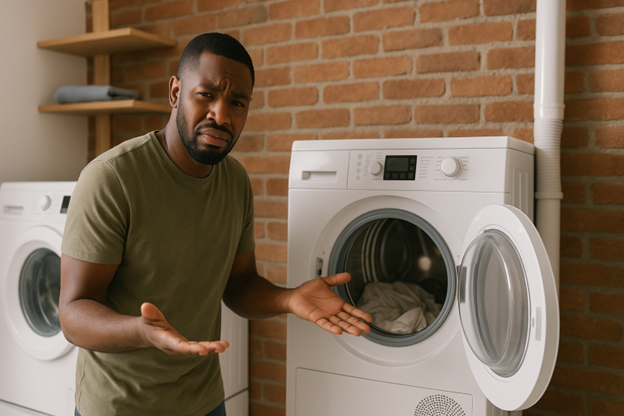Introduction
I was scrolling through Instagram and came across @2momculture account. Two homeowners venting (pun intended) about their dryer problems. I imagine the scene went something like this: after months of frustration with a dryer that just wouldn’t dry, they finally decided to replace it. Out with the old, in with the new! They did everything right, even compared models, upgraded to the fancy one with all the settings but guess what? The clothes were still coming out damp. At that point, their frustration must have turned into curiosity. Could the problem not be the dryer after all?
In their caption, they joked:
“…So now the heat just sittin’ there like ‘we live here too’ 😭🔥 #homeowner”
when I read their caption it cracked me up but it also revealed something deeper. The real issue wasn’t the dryer’s performance. It was likely due to poor HVAC ventilation. The house simply couldn't, how I like to say ”breathe” or could not exhaust the hot, moist air from the dryer.
Purpose of a Dryer: To Dry
A dryer’s main function is to remove moisture from clothes by circulating hot air and exhausting the air outdoors.
If the vent line is blocked, undersized, excessively long, or even disconnected, the dryer ends up recycling warm, humid air back into itself. It’s like running a dehumidifier with nowhere for the water to go. The result? Longer drying times, higher energy bills, and an overheated laundry room.
In some older homes today, especially remodels, the venting system was never properly designed. In those cases, no matter how new or high-end the appliance is, drying failures will keep happening.
Diagnosing the Real Problem
Before you rush out to buy a replacement dryer, pause and check a few simple things:
Inspect the vent line. Make sure it’s clear of lint buildup or obstructions.
Check duct routing. The vent should lead directly outdoors confirm it not into a wall cavity, attic, crawlspace, or garage.
Test airflow. While the dryer runs, hold your hand at the exterior vent cover; you should feel a steady, strong flow of warm air.
Measure performance. If available, use a flow hood or anemometer to verify exhaust velocity.
These small steps can reveal whether the issue lies in the appliance or in the home’s venting system.
Long-Term Design Solutions
If you discover that your home’s exterior venting isn’t practical or simply doesn’t exist. Then consider ventless condenser or heat-pump dryers. These modern alternatives remove moisture by condensing water vapor into a collection tank or drain line, eliminating the need for expensive ductwork.
Clearing a blocked vent or upgrading to a better-ventilated system can make a dramatic difference: clothes dry faster, the laundry room stays cooler, and your electric bill may even drop.
And if you did end up buying that second dryer, maybe it’s a sign to start planning your dream laundry room, right off your bedroom suite. Now that’s luxury living. (Stay tuned for a future post where we talk about sound barriers and design strategies for laundry spaces!)
Conclusion: The System Behind the Appliance
Homeownership has a way of humbling all of us. It teaches patience, persistence, and how every part of a home; works together as a system. So, if your dryer isn’t drying, don’t assume it’s broken. Take a moment to look deeper. The issue might be hiding in your HVAC. When you fix it, you gain more than dry clothes. It is also confidence, and pride in how your home truly works.
About the Author
Join the Achlab Newsletter
Get weekly insights on architecture, design law, and lifestyle — delivered straight to your inbox.
Subscribe NowBook a Consultation
Ready to bring your project to life? Get tailored guidance on home design, permitting, or construction strategy with Achlab.
- Perfect for early-stage scopes & homeowner questions



